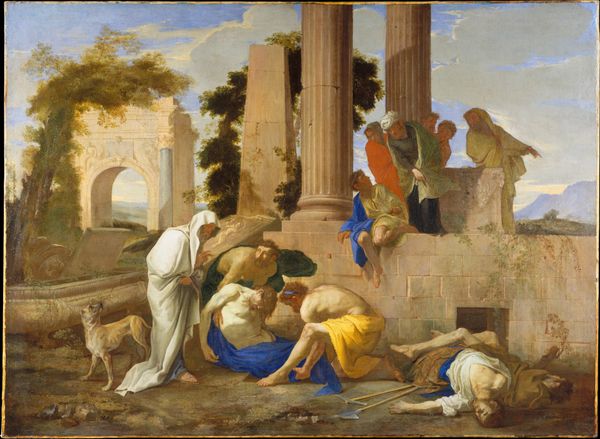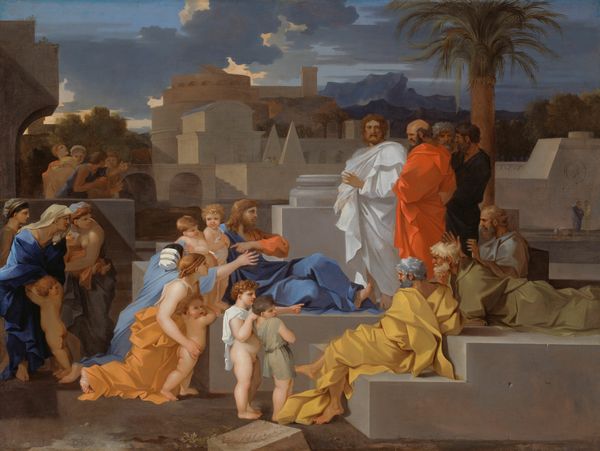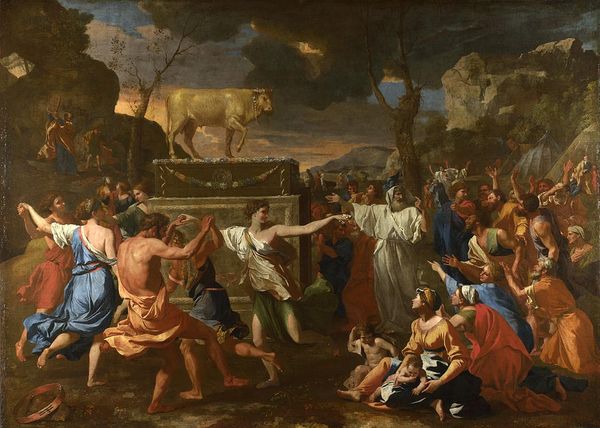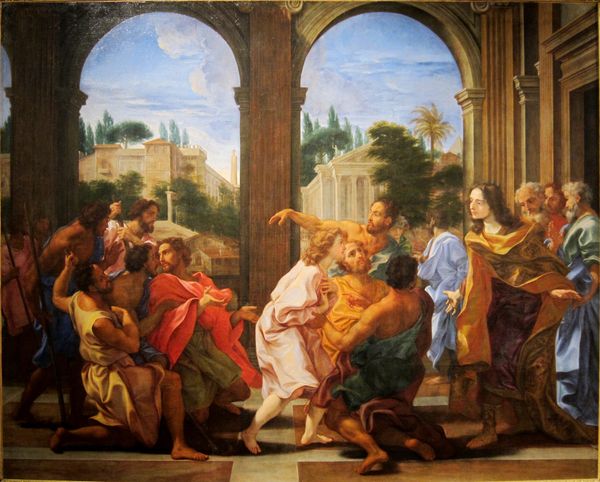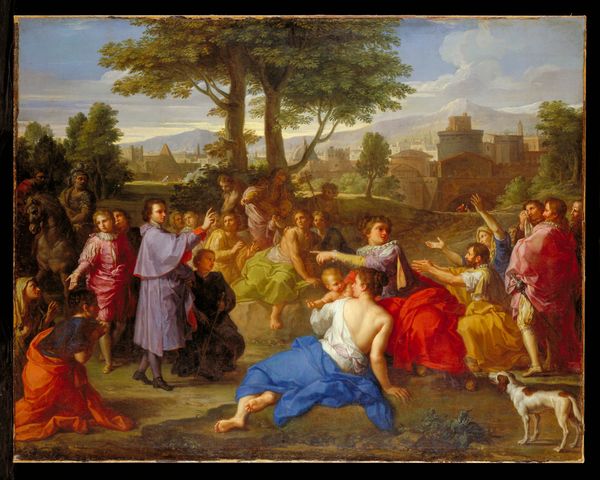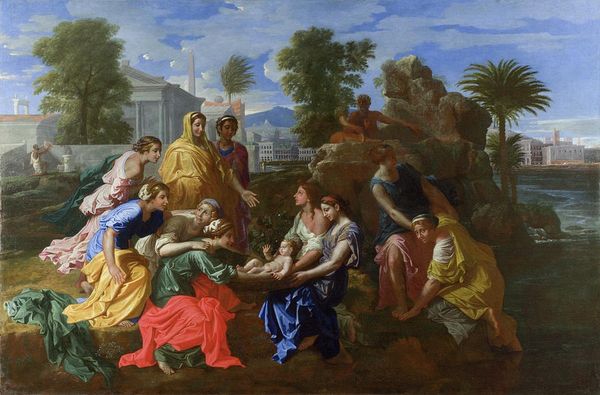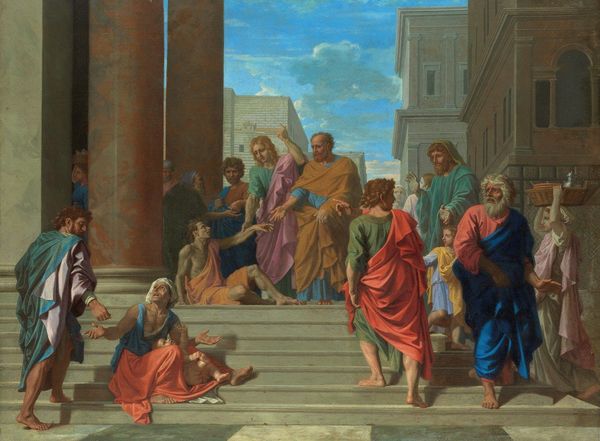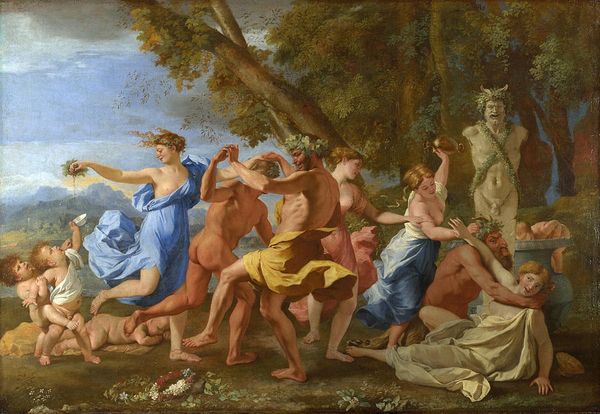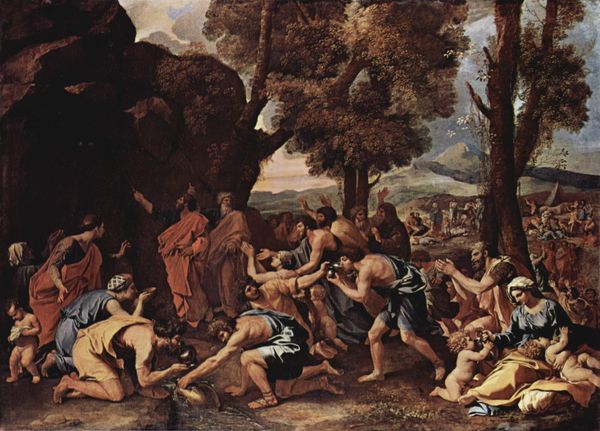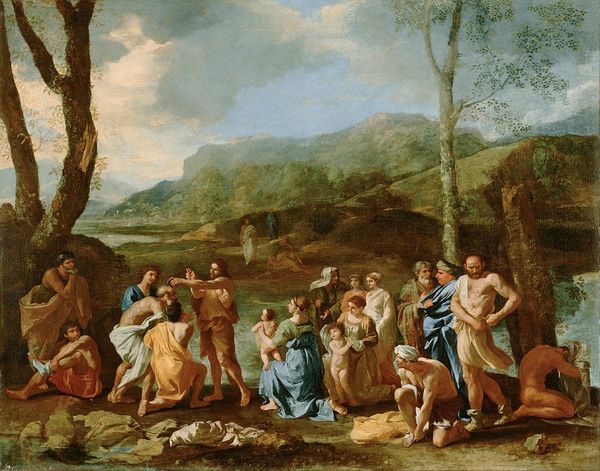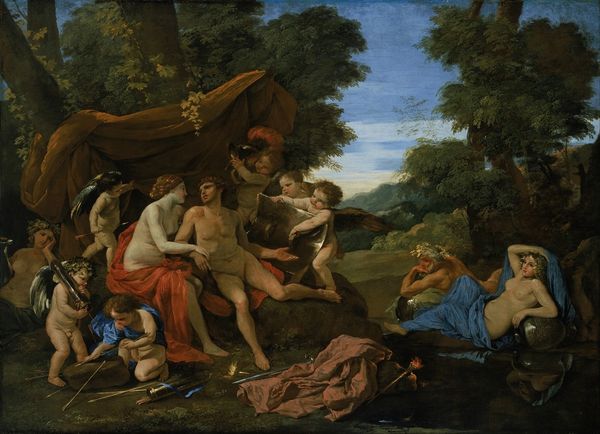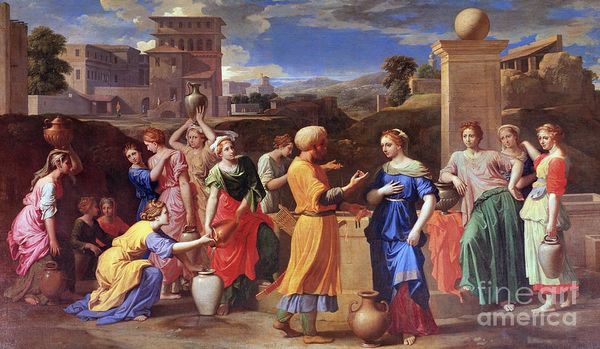
Moses Defending the Daughters of Jethro c. 17th century
0:00
0:00
oil-paint, oil-on-canvas
#
narrative-art
#
baroque
#
oil-paint
#
landscape
#
figuration
#
oil painting
#
history-painting
#
oil-on-canvas
Dimensions: 42 x 54 in. (106.68 x 137.16 cm) (canvas)
Copyright: Public Domain
Curator: Sebastien Bourdon, circa the 17th century, offers us "Moses Defending the Daughters of Jethro." Painted in oil on canvas, this work is proudly held here at the Minneapolis Institute of Art. Editor: Immediately striking is the careful balancing act between pastoral serenity and sudden action; there's a tension in the figures’ stances, especially in the vibrant reds pulling my eye from the cool backdrop. Curator: That vibrant red indeed accentuates the narrative. Bourdon captures the moment when Moses intervenes to protect Jethro's daughters from oppressive shepherds. Notice how the spatial organization itself mirrors this disruption; the receding landscape and classically rendered architecture contrast with the active foreground. Editor: The positioning feels calculated. Note how the women are arranged along the aqueduct creating horizontality, a symbol of civic order or maybe female pastoral idyll. Conversely, the conflict happens along a vertical plane with men aggressively taking up visual space. Does the spatial ordering underscore power relations? Curator: A pertinent observation! Consider the broader socio-political climate. The painting emerges within the tradition of history painting, used to demonstrate moral virtue. Moses, acting as protector and future leader, is depicted with heroic musculature, a figure of social order restoring stability through the exertion of force. It evokes the values elites aimed to inculcate in the broader populace, the very same values reinforced by institutional structures. Editor: I am interested in this Baroque aesthetic as a construction, perhaps as mythmaking; the poses seem contrived, a bit performative. The dramatic lighting – chiaroscuro highlights the heroics, but isn't quite grounded. The painting's construction becomes transparent. Curator: Transparency or careful construction? What might seem performative might equally express underlying structural principles of harmony and balance so critical to Bourdon's moment. His handling of color and form echoes Poussin, with classical rigor mediating any excessive theatricality, to create not simply emotion, but rational clarity. Editor: Regardless, this tension offers valuable insights, from power relations to gender to pictorial structures; its social reflections intertwined with its stylistic choices. Curator: Indeed, it exemplifies the profound interconnectedness, offering enduring material for exploration.
Comments
minneapolisinstituteofart almost 2 years ago
⋮
This painting illustrates a biblical scene from the book of Exodus. Moses—later a great leader of the Israelites—was sitting by a well in the land of Midian when the seven daughters of Jethro, a Midianite priest, came to water their father’s sheep. Some shepherds tried to drive the women away, but Moses (in red) chased them off. A grateful Jethro gave Moses one of his daughters in marriage. The French painter Sébastien Bourdon was celebrated for his classical landscapes. Featuring ancient Greek ruins or architecture, these were idealized settings for historical or religious events that include strikingly lifelike figures.
Join the conversation
Join millions of artists and users on Artera today and experience the ultimate creative platform.
